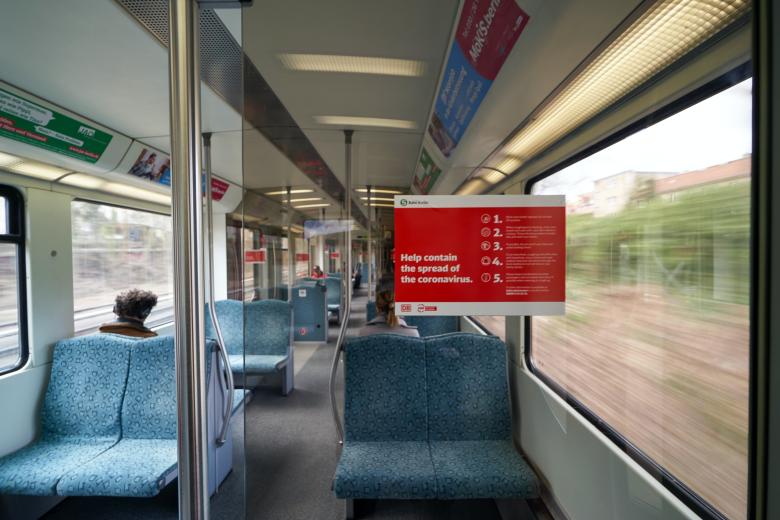Coming back to the workplace in pandemic times
In the current phase of the COVID-19 pandemic, countries across Europe are fortunately seeing a decrease in detected infections, hospital admissions and deaths. This is the effect of lockdown policies with different elements but with the common denominator of social distancing, travel restrictions and a work-from-home policy for most sectors. Also in the Netherlands, this has been the general policy of the ‘intelligent lockdown’.
Workplace of the future
For the coming months, the Dutch government has laid out the path to return to (a kind of) normalcy by reopening the country. While working from home whenever possible is still emphasised as a general rule, we have to address how we will organise the workplace of the future. While I believe that the concept of working from home will stay with us in the future, a large group of employees will have to return to their workplace in many sectors.
Risk stratification
Since the general approach to harnessing the pandemic will be to identify and protect people at high risk of contracting the virus and developing a more severe form of the disease, it is important to consider how we use risk stratification to develop guidelines regarding who can return to work safely and who needs to be better protected. Risk stratification is a tool for identifying—and predicting—which individuals are at high risk or are likely to be at high risk. An article published in the new England Journal of Medicine this week provided a first metric that could help governments and employers to address this issue.
Identifying risk groups
First, we have to identify those at risk. Initially, data analysis mostly identified elderly people, for example those in retirement homes, as the high-risk group. Now that we have more data, a broader picture can be sketched. If we look at the age groups of the working population, large studies in China (more or less corresponding to the RIVM data in the Netherlands) have shown that the fatality rate of those under age 50 without a chronic disease was less than 0.5%. For people aged 50 to 59 it was 1.3%, and for those from 60 to 69 it was 3.6%. If you add chronic disease such as heart disease or diabetes to the equation, the fatality rate may approach 10% in those over 60, which is more than 20 times the rate for people under 50 without a chronic condition. If you add into the equation a job in what is considered a high-risk environment, such as a hospital, the high-risk group (older employees with chronic conditions) are even more at risk of developing a serious form of the disease.
Accommodating high-risk groups
Utilising risk stratification means that this perspective should guide employers on how to organise the specific work environment for individual employees wherever possible. Since workplaces will have to be run at a lower occupant density for the foreseeable future in the so called 1.5-metre society, not everyone will be able to return to their physical workplace. It would be wise to consider whether employees with high disease risk should be accommodated first and foremost with less risky workplace situations. Of course, this will provide enormous challenges in some sectors such as production, transportation and of course, healthcare, and it carries the risk of stigmatisation.
Safe workplaces at universities
Though the pandemic makes the situation more complex for all groups, we need to start discussing now how we should organise the safe workplace of the future, also in universities. Should staff members with a high risk level work primarily in virtual education environments? The use of such technologies can in many cases be a good alternative, and a differentiated approach to the organisation of a new work landscape could be part of the solution. But it also creates new challenges. Not everyone can work efficiently in an a home situation, home workplaces are not always ergonomic, and there is a lack of social interaction with colleagues, for example at the office coffee machine. Blended solutions consisting of a combination of working from home a few days per week followed by on-site activities could be a solution for overcoming these obstacles. Again, one has to be aware that this will be harder to achieve in some sectors. That is why individual risk stratification should be an important determinant in how we organise the workspace.
All this shows that the COVID-19 pandemic involves far more than dealing with a deadly disease. It will continue to affect our daily lives, how we work and travel, how we care for our families and how we maintain the matrix as well as the wellbeing of society—not only in terms of health, but also economically. The fact that there is no one size fits all situation makes it even more complex. But addressing the individual risk profile will not only save lives, it will also harness the long-term effects of the disease in a more efficient way.
-
Looking for a safe place to travel during the pandemic
After an exhausting few months in the ‘COVID-19 era’—as we can call it now—after months of hard work and the stress of dealing with a pandemic, everybody is looking to take a break during the summer. But unlike in recent years when we could plan our summer vacation months in advance, this year it...

-
The search for a vaccine: scientific and ethical considerations
It feels sometimes as if the whole world of science is working exclusively on finding a cure for COVID-19. If you are looking at the search for an effective vaccine, it was recently published in The New York Times that more than 130 vaccine candidates are currently in the pipeline, which is still...

-
How simple measures can have massive effects
With every month, every week that passes, we’re seeing the publication of more and more medical data and studies on COVID-19. A friend of mine who is the editor of a very reputable international medical journal told me recently that they get more than 100 submissions per day that involve research on...

